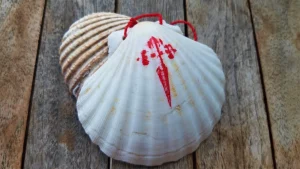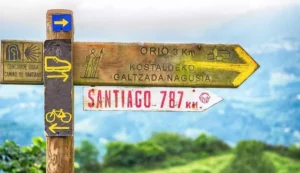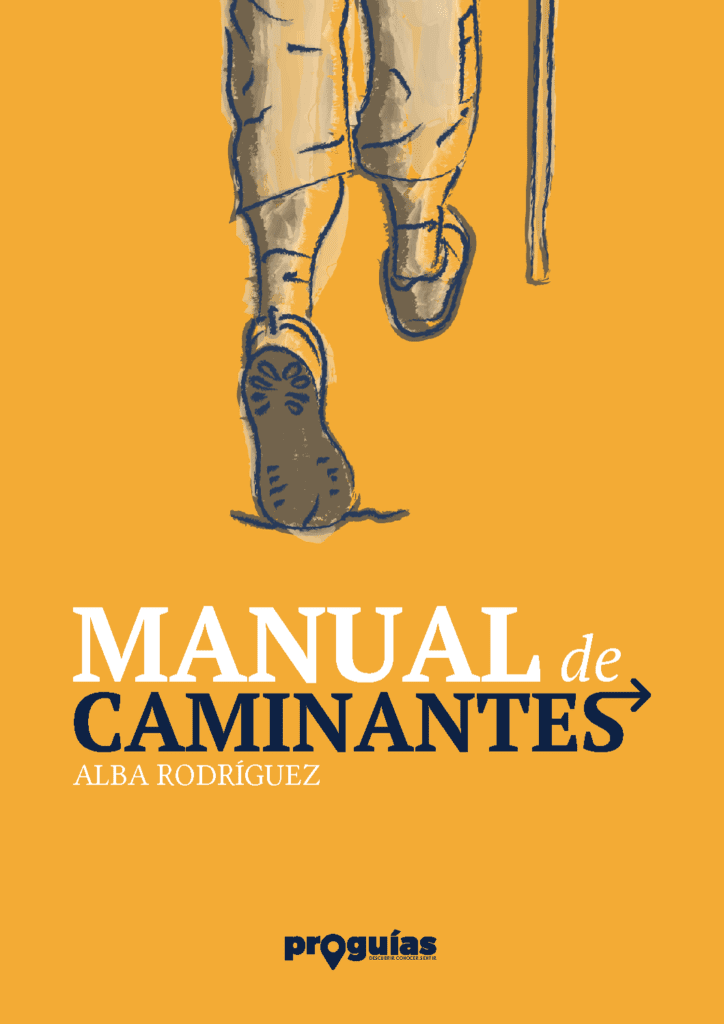There are many references that indicate that the Game of the Goose was created by the Order of the Knights of the Temple: an entertainment that would show a map of the Camino de Santiago in a symbolic way through its 63 squares. Do you dare to explore it with us?
The origin
Although the origin of the Game of the Goose is uncertain, there are many theories. The first suggests that it could be a Greek creation during the siege of Troy, based on the Phaistos discs from around 2,000 BC.
Another theory, perhaps the most famous, is that this game was created in Renaissance Florence and came to Spain as a gift from Francesco de' Medici to Philip II.
Finally, the one we want to tell you about today is the one that links this game to the Camino de Santiago. According to this, it was the Order of the Temple that invented this game. The knights of this order were in charge of protecting those on pilgrimage to the main holy cities: Compostela, Rome and Jerusalem.

The Goose
The Templar theory explains that the Game of the Goose would be a map of the Camino de Santiago symbolically represented. More specifically, a map of the French Way: the most popular and busiest during the Middle Ages.
The choice of the goose as the game's leading animal is no coincidence either. For the Templars, this animal symbolised wisdom and is present in some constructions on the Pilgrim's Way to Santiago that show their legacy. For example, in the inscriptions with goose feet or the Y-shaped cross of Santa María de los Huertos in Puente la Reina.
And we do not only see it in monuments. There is also toponymy related to geese all along the Pilgrims' Route to Santiago de Compostela. There is Villafranca de Montes de Oca, Puerto de Oca, El Ganso, etc.
Speaking of the board, many scholars note the correspondence between squares and stages of the Camino. From 1 to 31, the stages to Santiago de Compostela. From 32 to 63, the return stages. It is true that today very few pilgrims make the return journey on foot, because we have other means of transport. But in other times there was no other way, and returning home was part of the pilgrimage.
In addition, each square originally had a symbol. Their meaning has not survived to the present day, but an attentive eye will see that many of these symbols are represented in different medieval constructions as stonemasonry marks. That is to say, as an identifying signature of the stonemasons' workshops that were carried out on the stone itself, in order to charge for each piece made. Many of these marks can be seen in the Cathedral of Santiago de Compostela itself and in many other buildings of the period.
Finally, the aim of the game is to reach the exact number to enter the goose garden, which is not numbered. And this is no coincidence. It is the great Goose, which holds the secret, enlightened and unwritten wisdom characteristic of initiatory traditions. It is the end of the Path of an initiate, towards the birth of a more devout and faithful person.

Following the encrypted map of the Way of St. James
Although we cannot identify all the symbols and their meaning, we can identify many of the illustrations that make up the board. For example, the first bridge refers to the town of Puente de la Reina. The second bridge refers to the town of Hospital de Órbigo. The inn undoubtedly points to the inns along the route. And the prison probably referred to the current Parador de San Marcos, in León, which in addition to being a hospital for pilgrims was a prison known throughout the length and breadth of the route.
But it is not only real places that are represented on the board. There are also spiritual references and symbolic spaces closely linked to medieval tradition. This is the case of the well, which refers to perdition. Even more: he who falls into the well - into sin - needs forgiveness, so he will have to be rescued in order to continue moving forward.
This is also the case with the labyrinth, which is linked to the possible physical and spiritual losses of those who find themselves walking without signposts. It used to be represented as the Tower of Babel: the confusion of languages and ideas.
There is even a square with a skull that takes us back to the beginning of the game, but which can be read as a reference to the hardness of the Camino in times before ours, where not everyone managed to reach the goal and return home safe.
You may also be interested in: The shadow of the pilgrim. Secrets of Santiago de Compostela
In any case, the different interpretations of the link between the game of the Goose and the Way of Saint James coincide in that three well-defined stretches can be seen. From Nájera to Santo Domingo de la Calzada. From Burgo Ranero to Mansilla de las Mulas along the Via Trajan. And from O Cebreiro to Sarria.
The popularity of the game has even taken it to some squares. In Logroño, the Plaza de Santiago has become a giant boardwhere the dice that form the benches symbolise the randomness of the Camino and where the tiles represent the squares with references to some Camino towns such as Jaca, Puente la Reina or Santo Domingo de la Calzada.
So, now, when you play, you will see other meanings in this game that is much more than just moving tiles around the squares.






